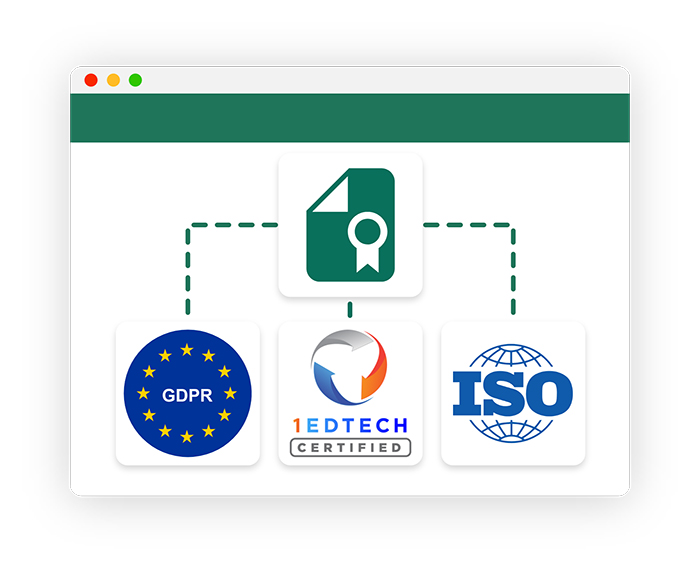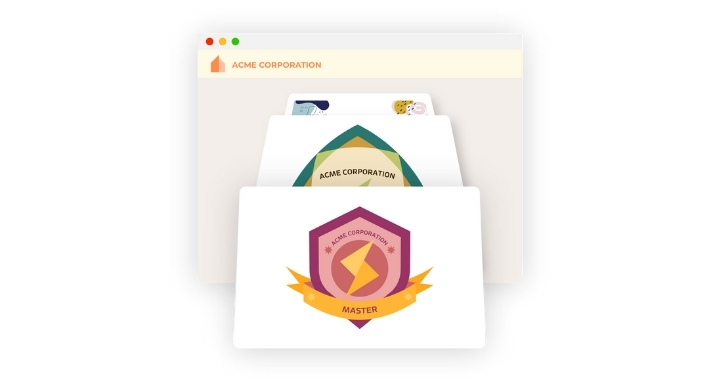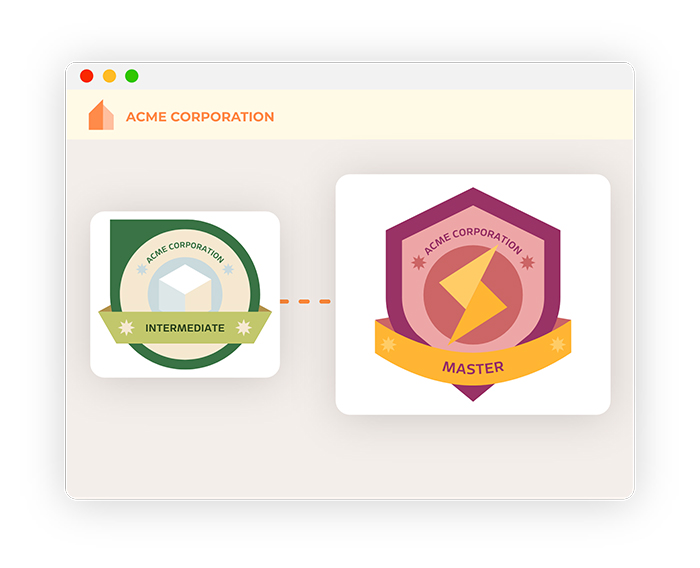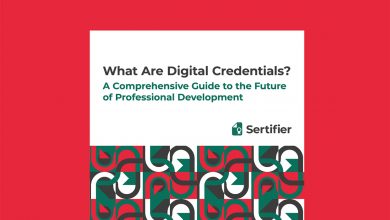Create a Successful Digital Credentialing Program
Contents
In today’s rapidly evolving job market, digital credentials have emerged as a valuable tool for individuals seeking to validate their skills and competencies, and for organizations looking to verify the qualifications of potential employees or partners. A well-designed digital credentialing program can provide numerous benefits, such as increased engagement and participation, improved skills and competencies, and enhanced credibility and recognition in the industry.
However, creating a successful digital credentialing program requires careful planning and consideration. In this article, we will examine some key factors to consider when creating a credentialing program, including identifying the target audience, designing effective credentials, and choosing the right technology platforms and tools. By following these best practices, you can create a credentialing program that provides value to both the earners and the organizations that recognize them.
Define Your Goals: The Importance of Establishing Clear Objectives
Establishing clear goals is an important step to consider when creating a successful digital identity program. Your goals should reflect the overall goals of your program and your business strategy. Setting clear goals helps your project focus and set your priorities.

In this section, we will focus on the importance of defining your goals. You can handle the following:
- Setting Clear Goals: When establishing clear goals, it’s essential to define the purpose of your digital credentialing program. This involves determining what you aim to achieve through the program. Consider whether your goals align with your overall program objectives and business strategy. By setting clear goals, you provide focus and direction to your program, enabling you to prioritize your efforts effectively.
- Creating Measurable Goals: To achieve your goals, it’s important to create measurable objectives. Measurable goals provide tangible benchmarks that allow you to track progress and evaluate the success of your digital credentialing program. By establishing clear metrics and indicators, you can assess whether you’re meeting your intended outcomes and make adjustments if needed.
- Limiting Your Goals: While it’s crucial to be ambitious, it’s equally important to set realistic goals that are achievable within the resources and timeframe available. Setting overly ambitious goals may lead to frustration and hinder the overall success of your digital credentialing program. Prioritize your goals based on their importance and feasibility, ensuring that they align with your organization’s capacity and constraints.

- Assessing the Appropriateness of Your Goals: To ensure the appropriateness of your goals, it’s necessary to evaluate whether they align with your overall business strategy. Consider how your digital credentialing program fits into the larger strategic objectives of your organization. Assess whether your goals are compatible with the resources, capabilities, and direction of your business. Alignment between your goals and business strategy enhances the relevance and effectiveness of your program.
- Continuous Evaluation of Your Goals: Market conditions are dynamic and can evolve over time. It’s essential to continuously evaluate your goals to adapt to these changes. Regularly assess the progress and impact of your digital credentialing program against the market landscape and emerging trends. By staying agile and responsive, you can make adjustments to your goals and strategies to ensure continued relevance and success in the evolving market.

Identifying Your Target Audience: Who Are Your Credentials Designed For?
When creating a digital credentialing program, it’s important to identify the target audience that the credentials are designed for. This will help ensure that the program is tailored to meet the needs and interests of the intended audience, which can help increase engagement and participation. Here are some key considerations when identifying your target audience:
- Job roles and industries: Consider the specific job roles and industries that your digital credentialing program will serve. Are you targeting a particular profession, such as healthcare or education? Are the credentials designed for individuals in entry-level positions, or for those with more advanced experience?
- Skills and knowledge: Think about the specific skills and knowledge that your credentials will assess or validate. What are the key competencies that individuals in your target audience need to possess? How can your credentials help them develop or demonstrate those competencies?
- Demographics: Consider the demographic characteristics of your target audience, such as age, gender, location, and educational background. These factors can impact how you design and market your digital credentialing program.
- Motivations and goals: Identify the motivations and goals of your target audience. Are they seeking to improve their job prospects or advance in their careers? Are they looking to learn new skills or validate existing ones? Understanding their motivations can help you create a program that meets their needs and interests.
- Competitor analysis: Research your competitors and their credential programs. Identify the gaps or opportunities in the market that your program can address. Consider how you can differentiate your program to appeal to your target audience.

Designing Your Credentials: Best Practices for Developing Effective Credentials
Designing credentials is a crucial step when developing a digital credentialing program. Effective credentials should be designed to assess and validate specific skills and competencies and provide value to both the winner and the organizations that recognize them. Some of the best practices for designing effective digital credentialing include:
- Clearly define skills and competencies: Clearly define the skills and competencies that credentials will assess and validate. Explain in clear and concise language the criteria that must be met in order to earn a certificate or badge.
- Develop a rigorous evaluation process: Develop a rigorous evaluation process that evaluates the skills and competences identified in the qualification document. This may include exams, projects, simulations or other assessments.
- Use industry standards: Use industry standards and best practices to ensure that the evaluation process is valid and reliable. This can help increase the credibility of credentials and ensure widespread recognition.
- Provide detailed information: Provide detailed information about the qualification, including the skills and competences assessed, the evaluation process, and the criteria for earning the qualification. This can help potential winners understand the value of their credentials and encourage participation.
- Include feedback: Include feedback from stakeholders, including potential winners and employers, to ensure that the mandate is relevant and valuable.
- Consider stackable credentials: Consider designing stackable credentials that allow winners to build on their current skills and competencies. This can encourage continued engagement and skill development.

Technology Considerations: Choosing the Right Platforms and Tools
The technology should support the assessment and issuance of the digital credentialing, as well as provide a platform for earners to showcase their credentials and for organizations to verify them. Here are some key technology considerations when creating a credential program:
- Assessment platforms: Choose assessment platforms that are reliable, secure, and can support the types of assessments required for the credentials. This may include online exams, simulations, or projects. Consider using industry-standard assessment platforms to ensure that the assessment process is valid and reliable.
- Digital credentialing platforms: Choose a credentialing platform that can securely issue and manage certificates and badges. Consider platforms that provide credentials that are shareable and can be verified online. Ensure that the platform can integrate with other systems, such as learning management systems or credentialing organizations. Check out our article to learn more about digital credential management tools.
- Data security and privacy: Ensure that the technology platforms and tools chosen are secure and comply with data security and privacy regulations. This is especially important when dealing with personal information, such as an earner’s name, contact information, and assessment results.

- User experience: Consider the user experience when selecting technology platforms and tools. Choose platforms and tools that are easy to use and provide a positive user experience for earners, assessors, and verifiers.
- Technical support: Ensure that the technology platforms and tools selected have reliable technical support. This can help address any issues that arise and ensure that the program runs smoothly.
Conclusion
In conclusion, by carefully considering factors such as clear goal-setting, target audience identification, effective credential design, appropriate technology selection, and continuous evaluation, you can create a successful digital credentialing program. This program will validate skills, enhance engagement, and provide credibility and recognition in a rapidly evolving job market. Embracing credentials empowers individuals and organizations to thrive in today’s competitive landscape.



